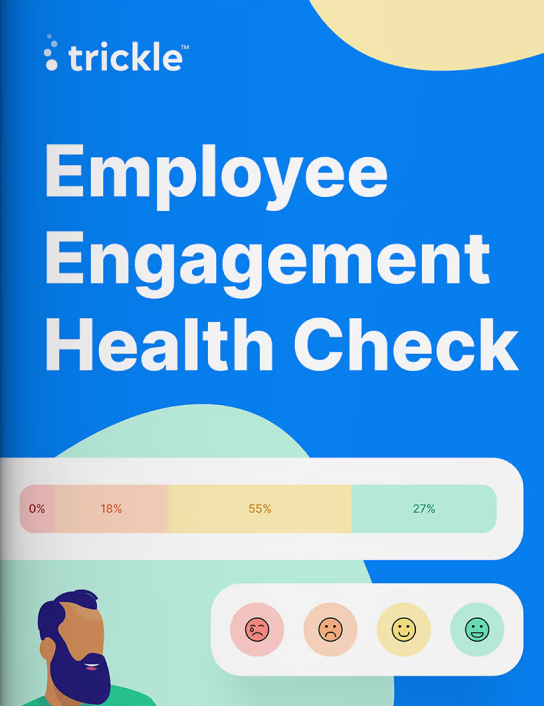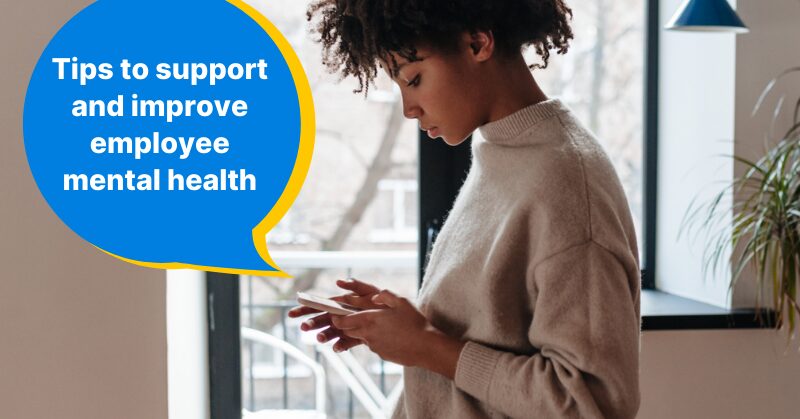How well does your company engage its employees?
Take your health check and find out.


Mental health plays a key role in people’s physical health, wellbeing and performance, both at home and at work.
Over the past year, the issue of employee mental health has come under the spotlight, as people’s resilience, energy and motivation have been put under enormous strain by the ongoing Coronavirus pandemic.
Since the first lockdown last year, depression, anxiety and stress across the country has increased significantly.
Experts say that we are in the midst of a mental health crisis, which they have dubbed the “second pandemic”, and are calling on public health officials to do more to ensure health care systems and communities are equipped to handle the problem.
More than half (51%) of UK employees have experienced an increase in worries relating to their mental health due to the pandemic, according to figures from a recent report.
An ONS survey revealed that almost 1 in 5 adults experienced some form of depression in early 2021 (27 January to 7 March); this is an increase since November 2020 (19%) and more than double that was observed before the Coronavirus pandemic (10%).
Now, as the country starts to tentatively reopen, it’s unlikely that the impact of the stress and anxiety many have experienced over the past year will dissipate overnight.
In fact, reopening workplaces brings with it other anxieties such as the risk of exposure to the virus for unvaccinated people and an imminent change to daily routines.
Therefore, it’s imperative that organisations start planning now how best to deal with the mental health challenges that lie ahead.
Employees cannot be their best when their mental health is suffering, it’s not realistically possible or wise for employers to ask their employees to park their personal problems at the door when they come to work.
When organisations do not prioritise the mental wellbeing of their employees productivity, morale and retention suffer as a result.
Employees who are struggling with their mental health but do not receive support or understanding from their managers are at greater risk of burnout, and are more likely to be absent due to illness and have lower job satisfaction.
Deloitte estimates that poor mental health amongst employees costs UK employers up to £45 billion each year, which is a rise of 16% since 2016 – an extra £6bn a year.
To reduce the high costs associated with poor employee mental health and to build better work environments, here are three things business leaders can do to support their employees’ mental wellbeing.
Employers need to recognise that mental health, like a broken bone or maternity leave, is a real issue that cannot be ignored and should not be stigmatised.
Typically, within the work environment mental health is treated as a taboo subject and doesn’t get the attention, time or support it merits.
To change this approach to mental health, organisations need to start championing a culture that normalises mental health awareness, promotes psychological safety and creates space for the discussion of wellbeing.
Psychological safety is a key factor in creating the type of high performing, inclusive spaces where people can bring their complete self to work.
People will not be able to achieve their full potential if they are trying to cope with a mental health issue that they are also simultaneously trying to conceal for fear of judgement by coworkers.
Your people need to know that it is safe to talk about mental health, anxiety and stress, and that their career will not be impacted negatively.
Making this space and highlighting mental health is a key first step in being able to talk to your employees about their mental health.
If you trust and like your manager you are more likely to feel able to talk about mental health, this is why it’s important that managers make time to build a rapport and relationship with their teams.
Employees who have regular conversations with their managers say they feel they are better able to do their work and take care of themselves.
Regular check-ins, informal catch ups, more social interactions and active listening are key to building bonds and trust within the work environment.
Managers should lead by example and commit to the type of open communication they are trying to inspire.
Sharing personal stories and being vulnerable with their team is an effective way for a manager to do this. This type of personal vulnerability signals empathy, understanding and that it’s safe to share mental health concerns. It shows that everybody needs support at some point and that it’s ok to ask for it.
This approach will enable managers to more easily broach the subject of mental health with their teams and be more attuned to when someone may need extra support or guidance.
Key things to do:
When confronted with a problem it’s only natural to want to find a quick and easy solution. This approach can lead to sentences such as “you should” or “this works for me when”.
Such advice, no matter how well intended can overstep the mark, cause offence to the person or worsen the situation by making them feel “broken” or a “problem”.
Rather than put forth solutions, a better approach is to actively listen to the person and show emotional intelligence in how your respond to them.
This approach will help you to focus more on their employee experience and demonstrate that you are authentic in your goal of helping them.
Managers should try to use supportive open ended questions such as:
The most effective changes are often the ones that are guided by your people and by empowering them to have a voice you can find the right solutions to mitigate the common sources of employee stress more quickly.
Small changes such as increased flexible working, schedule changes to avoid overloading teams, and providing a means of clearer communication can vastly improve your employees’ work experience.
With a dynamic real-time online platform like Trickle, you can bring the activities outlined above into one app and immediately start connecting with your people in a more meaningful way.
Trickle helps organisations to put employee engagement and wellbeing at the heart of their operation, to build a more human-centred work culture, and be proactive in taking early impactful interventions that make a real difference.
Using Trickle, leaders can clearly sign-post for their people what support and guidance is available to them.
With its familiar and intuitive design, the platform is easy to use and navigate, which means no additional training is required to start using Trickle.
Trickle empowers employees by giving them a platform to share their voice and provides a safe environment where they can reach out for support or guidance whenever they need it, 24/7.
Employees can choose to raise issues confidentially or they can make their managers aware to enable any potential issues to be nipped in the bud before they become more serious problems.
Designed to be social and mimic the natural flow of two-way conversation, Trickle enables managers to easily check-in with their teams on a regular basis and in a non-intrusive way that doesn’t burden already busy employees.
Find out more about how Trickle can help your organisation to better support employee mental health.
Get in touch for more information or to book a short 20 minute demo.
Alternatively you can trial Trickle absolutely free for 30-days.